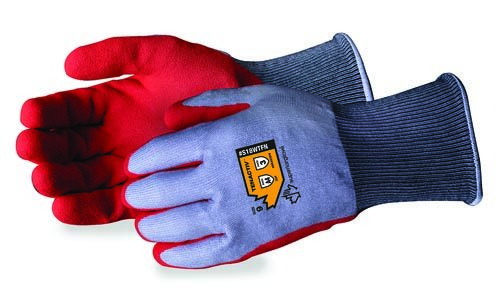Waterproof vs. water-resistant work gloves
Is there a difference between waterproof and water-resistant gloves?

Responding is Corenne Taylor, content marketing specialist, Superior Glove Works, Acton, Ontario.
Remember the last time you shopped for waterproof gear? Maybe it was for gloves, a jacket or socks – whatever you were looking for, no doubt you ran into terms such as water-resistant, water treatment, water-repellent, etc.
A lot of people get confused by these terms, misinterpreting them as advertising-speak for waterproof. In almost every case, if an item isn’t specifically marked “waterproof,” it isn’t waterproof. But the question you need to ask isn’t whether an item is waterproof, but whether you actually need something that is waterproof.
True waterproof gloves (I’m using gloves in this example, but the logic applies to other garments as well) are exactly that: Water will not be able to get in. In contrast, gloves that offer water resistance, water treatments, water repellency, etc., will keep out water only to a point, but certainly won’t keep your hands dry after a full submergence or through a torrential storm.
So, why not go with waterproof gloves every time and get the best protection available?
The same reason you choose Orlando, FL, and not Bora Bora, French Polynesia, for your family vacation – there’s a trade-off. Much like a Bora Bora getaway, waterproof gloves typically are more expensive than their water-resistant counterparts. In addition, if you require extra protection from your gloves, such as cut or puncture protection, it’s tough to squeeze those into a waterproof glove and still maintain comfort and dexterity.
The main difference between waterproof gloves and water-resistant gloves is the technology.
Water-resistant gloves typically are treated with either a silicone- or PVC-based fabric spray, which creates a barrier that repels water but isn’t quite impenetrable.
Conversely, waterproof gloves have their protections built in as a single-, double- or triple-layer solution. As such, truly waterproof gloves are more expensive than their water-resistant counterparts, but are also much more effective.
Single-layer waterproof solution
If you’ve ever worried about “dishpan hands,” you’re already familiar with this type of waterproof glove, as dishwashing gloves are a great example.
A single-layer solution is precisely that: a single layer of material that stops water from getting through.
The downside is they don’t offer a ton of dexterity (imagine tightening a screw wearing dishwashing gloves) and, as well as keeping wetness out, they also keep it in. This means that as you sweat, the moisture leaving your skin stays in the gloves. Aside from being uncomfortable, this can be very dangerous, especially if you’re working in extremely cold conditions.
Double-layer
A double-layer solution features a treated outer layer combined with a PVC or polyurethane inner layer, resulting in better dexterity than a single layer and moisture-wicking for added comfort.
This is an effective, lightweight solution great for commercial applications such as hiking and running.
Triple-layer
For truly waterproof gloves that offer great breathability and dexterity, the best option is a triple-layer solution.
In a triple-layer solution, the innermost layer provides moisture-wicking comfort, the middle layer offers waterproofing in the form of a membrane, and the outer layer can offer other protections such as cut and abrasion resistance.
Although a triple-layer solution typically is the most expensive waterproof option, it’s also the most effective. However, triple-layer waterproof gloves have varying degrees of quality.
The two biggest features to look for in triple-layer waterproof gloves are the quality of the membrane and the way in which the layers are fused together.
Membranes can cost manufacturers anywhere from 10 cents to $10, and their performance varies just as vastly. If you absolutely need waterproof gloves, this isn’t the time for bargain hunting – get the best.
Another critical factor in the performance of waterproof gloves is how the membrane adheres to the other layers. If you slide your hand in and it feels like one layer, you’re wearing high-quality waterproof gloves; however, if you can actually feel the distinct layers or hear a crinkling sound, take a pass. Layers that aren’t properly fused together will reduce your dexterity and make the gloves uncomfortable to wear.
Editor's note: This article represents the independent views of the author and should not be construed as a National Safety Council endorsement.
Post a comment to this article
Safety+Health welcomes comments that promote respectful dialogue. Please stay on topic. Comments that contain personal attacks, profanity or abusive language – or those aggressively promoting products or services – will be removed. We reserve the right to determine which comments violate our comment policy. (Anonymous comments are welcome; merely skip the “name” field in the comment box. An email address is required but will not be included with your comment.)

